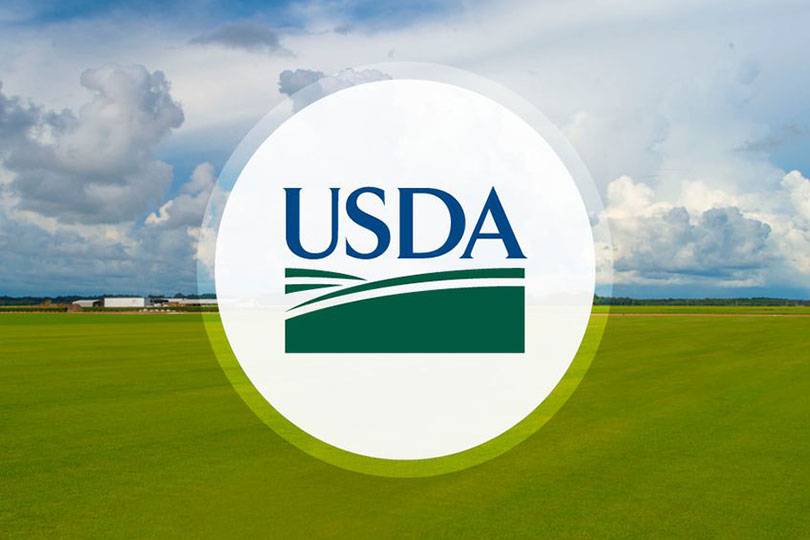The deadline to apply for the Coronavirus Food Assistance Program (CFAP) is extended to Sept. 11 and farmers and ranchers with approved applications will receive their final payment.
The U.S. Department of Agriculture (USDA) also announced additional commodities that are eligible for CFAP. The commodities were added in response to public comments and data.
After reviewing over 1,700 responses, even more farmers and ranchers will have the opportunity for assistance to help keep operations afloat during these tough times.
“President Trump is standing with America’s farmers and ranchers to ensure they get through this pandemic and continue to produce enough food and fiber to feed America and the world. That is why he authorized this $16 billion of direct support in the CFAP program and today we are pleased to add additional commodities eligible to receive much needed assistance,” U.S. Secretary of Agriculture Sonny Perdue said. “CFAP is just one of the many ways USDA is helping producers weather the impacts of the pandemic. From deferring payments on loans to adding flexibilities to crop insurance and reporting deadlines, USDA has been leveraging many tools to help producers.”
USDA collected comments and supporting data for consideration of additional commodities through June 22. The following additional commodities are now eligible for CFAP:
Specialty Crops
Aloe leaves, bananas, batatas, bok choy, carambola (star fruit), cherimoya, chervil (french parsley), citron, curry leaves, daikon, dates, dill, donqua (winter melon), dragon fruit (red pitaya), endive, escarole, filberts, frisee, horseradish, kohlrabi, kumquats, leeks, mamey sapote, maple sap (for maple syrup), mesculin mix, microgreens, nectarines, parsley, persimmons, plantains, pomegranates, pummelos, pumpkins, rutabagas, shallots, tangelos, turnips/celeriac, turmeric, upland/winter cress, water cress, yautia/malanga and yuca/cassava were added.
Non-Specialty Crops and Livestock
Liquid eggs, frozen eggs and all sheep are now eligible. Only lambs and yearlings (sheep less than two years old) were previously eligible.
Aquaculture
Catfish, crawfish, largemouth bass and carp sold live as foodfish, hybrid striped bass, red drum, salmon, sturgeon, tilapia, trout, ornamental/tropical fish and recreational sportfish are included.
Nursery Crops and Flowers
Nursery crops and cut flowers have been added to the list.
Other changes to CFAP include:
Seven commodities–onions (green), pistachios, peppermint, spearmint, walnuts and watermelons–are now eligible for Coronavirus Aid, Relief, and Economic Stability (CARES) Act funding for sales losses. Originally, these commodities were only eligible for payments on marketing adjustments.
USDA is correcting payment rates for onions (green), pistachios, peppermint, spearmint, walnuts and watermelons.
Additional details can be found at farmers.gov/cfap.
Producers Who Have Applied:
To ensure availability of funding, farmers and ranchers with approved applications initially received 80 percent of their payments. The Farm Service Agency (FSA) will automatically issue the remaining 20 percent of the calculated payment to eligible farmers and ranchers.
Going forward, farmers and ranchers who apply for CFAP will receive 100 percent of their total payment, not to exceed the payment limit, when their applications are approved.
Applying for CFAP:
Farmers and ranchers, especially those who have not worked with FSA previously, are recommended to call 877.508.8364 to begin the application process. An FSA staff member can help farmers and ranchers start their application during the phone call.
On farmers.gov/cfap, producers can:
- Download the AD-3114 application form and manually complete the form to submit to their local USDA Service Center by mail, electronically or by hand delivery to their local office or office drop box.
- Complete the application form using the CFAP Application Generator and Payment Calculator. This Excel workbook allows customers to input information specific to their operation to determine estimated payments and populate the application form, which can be printed, then signed and submitted to their local USDA Service Center.
- If producers have login credentials known as eAuthentication, they can use the online CFAP Application Portal to certify eligible commodities online, digitally sign applications and submit directly to the local USDA Service Center.
All other eligibility forms, such as those related to adjusted gross income and payment information, can be downloaded from farmers.gov/cfap. For existing FSA customers, these documents are likely already on file.
All USDA Service Centers are open for business, including some that are open to visitors to conduct business in person by appointment only. All Service Center visitors wishing to conduct business with FSA, Natural Resources Conservation Service or any other Service Center agency should call ahead and schedule an appointment. Service Centers that are open for appointments will pre-screen visitors based on health concerns or recent travel, and visitors must adhere to social distancing guidelines. Visitors are also required to wear a face covering during their appointment. Our program delivery staff will be in the office, and they will be working with our producers in the office, by phone and using online tools.
More information can be found at farmers.gov/coronavirus.


When I filled out the forms for CFAP for my livestock ( cattle ) , I was told I would receive $33 per head. Why did I receive 20% less? 32 head
USDA only distributed 80% of the funds in the first payment. They announced today that farmers and ranchers who have been approved will receive their final payment.
When can we expect the final payment?